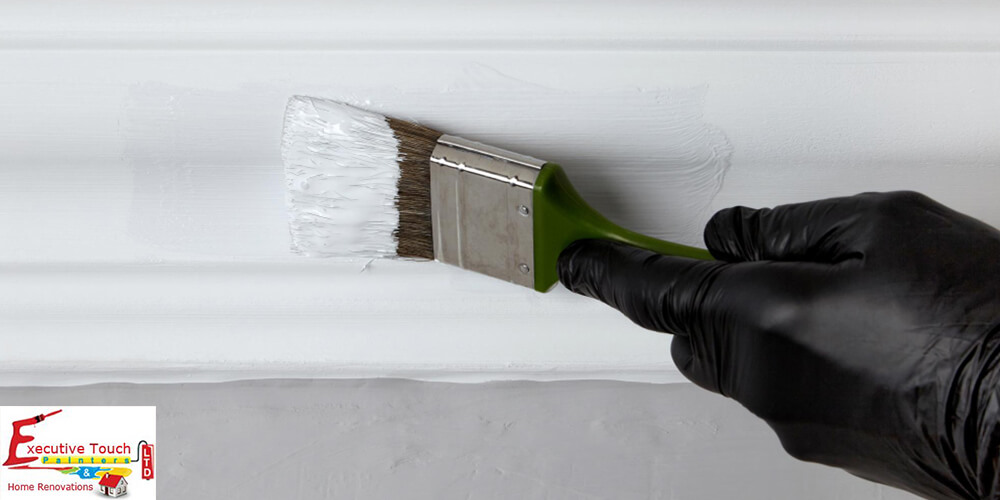
Painting on ceilings gives your space a new and warm touch, making a statement of its own. Painting ceilings is something other than expertise. You can paint ceilings if you have the right tools and supplies. Here are some tips that can be useful for painting ceilings and trim alone.
Before painting the ceilings, preparing the room as required is a must. Removing all the furniture from the room is important to avoid paint damage or spatter on your valuable furniture. Cleaning the ceiling before painting can adhere the paint poorly on the ceiling surface. Power off all the ceiling fixtures and remove them if required.
Over a while, the paint on the ceilings may be deposited in layers and can adhere to the paint. So, sanding the untextured ceiling before applying a new coat of paint is important. The sanding should be done with 100-grit drywall sanding paper. Sanding the surface will ensure perfect and smooth paint with the ceiling and increases paint bonding. After sanding the ceiling, remove the dust with a damp sponge.
While just painting the ceiling, not the wall, always tape the edge where the walls meet the ceiling. Tape should be applied to the mouldings too that decorate the ceiling. If you redo the whole painting in the room, consider starting with the ceiling. With this process, it is less necessary to tape the edges of the ceiling.
Covering the floor to avoid unwanted splashes on your valuable furniture and floor. Use drop clothes to avoid any unwanted splashes. Tape the drop clothes into the baseboards for more effective results. Taping the drop clothes to ensure they stay in place and using painter’s tape for doors and windows to avoid unwanted splashes. If required, cut the drop clothes as per requirement.
Use a roller with an extension pole to paint the ceiling with a latex primer. The primer acts as a stain barrier, making it easy to paint one coat to finish. The use of primer also depends on the surface you are painting. For smooth and light textured drywall, use latex drywall primer, which gives a closer colour texture to paint. Using a high-build primer is a sensible decision for ceilings with deeper textures. The high-build primer fills the imperfections and the grooves on the surface. After applying the primer, it is important to let it dry completely before applying any paint. In some cases, adding a second coat of primer, like painting on a new drywall or painting a light colour over a dark colour.
After the primer on the ceiling is dried up, The next step is to paint the ceiling edges first. The ceiling edges should be painted with a paintbrush. Painting the edges about 3 to 5 inches toward the ceiling helps to use a roller while painting the whole ceiling. Make sure to apply paint only after the edges are dried up. While painting the edges, make sure you use the same colour that will be painted on the ceiling. If you use white, pour the paint into a large bucket or container to get the colour consistency.
It is important to paint the ceiling in grids to avoid permanent roller marks. The section of the grid should be 3-3 feet. And while proceeding to the next section, start by overlapping on the wet edge of the previous section. This gives consistency to the paint on the ceiling and will look evenly painted. If the paint looks uneven, use a second coat of ceiling paint.
While painting on the ceiling, there are high chances of showers of a fine mist of paint. It is important to use safety equipment while painting the ceiling. Use a baseball cap and safety glasses to avoid the tiny particles entering your eyes and paint splashes on your head. Use a mask to avoid the chemicals entering your body while inhaling. Applying a lotion or oil on your body and face helps to wash off the paint freckles easily at the end of the day.
A clean ceiling paint gives the home a more aesthetic look. And a good painting can lead to appreciation. Knowing how to paint a ceiling cleanly will make the work easier and look cleaner. Executive Touch Painters have over 30 years of experience in painting and renovations. For more details, don’t hesitate to contact or call us at (416) 410-0164 for a free estimate.